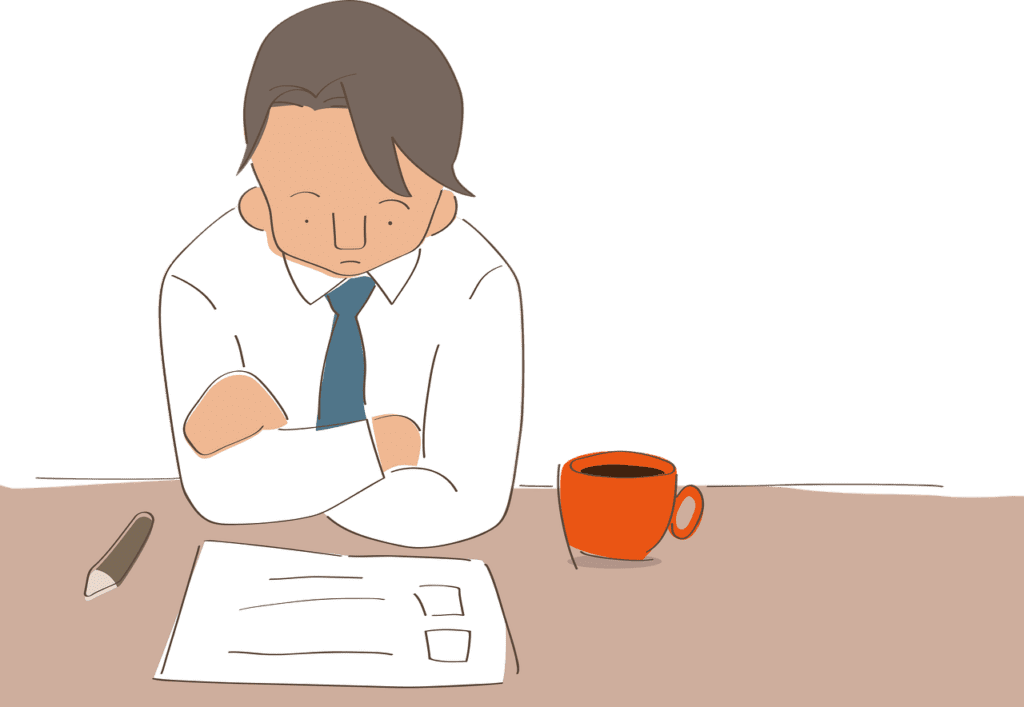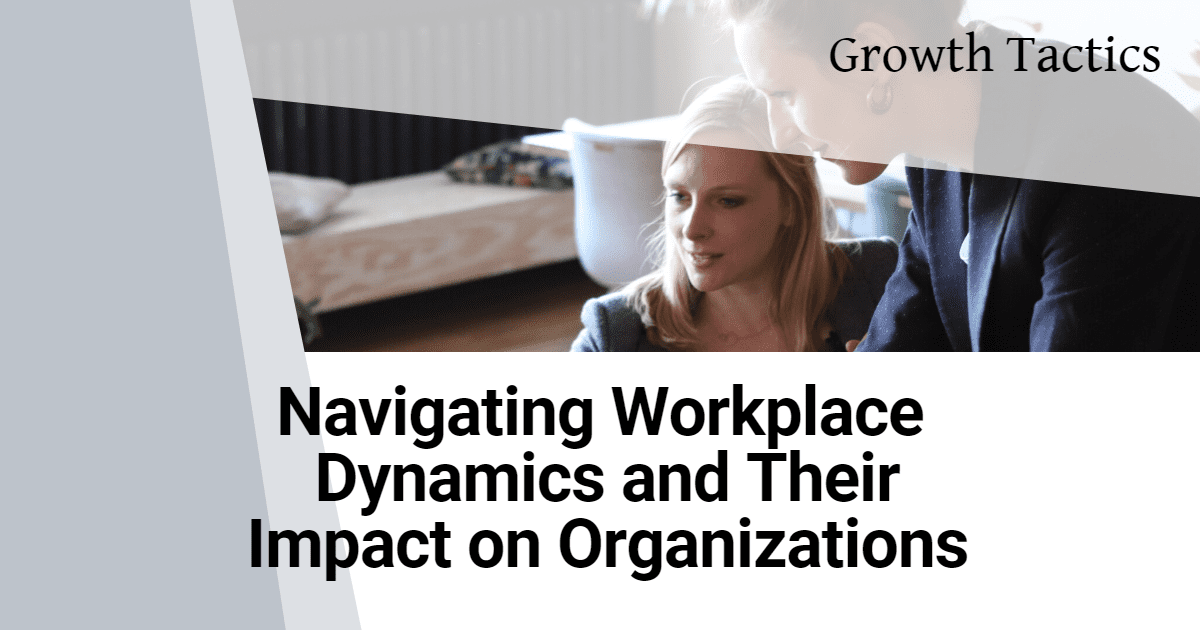Welcome to our article on workplace dynamics and their impact on organizations. We all know that the world of work can sometimes feel like a whirlwind, with a diverse mix of personalities, relationships, and expectations colliding in a bustling environment. But fear not! We’re here to help you navigate this dynamic landscape and understand just how important workplace dynamics are for the overall success of your organization.
Jump To Section
Understanding Workplace Dynamics
Workplace dynamics, simply put, are the interactions and relationships that exist among employees within your organization. These dynamics shape the culture, atmosphere, and productivity levels within your team and organization as a whole. As an experienced expert in the field, we know that creating strong and healthy workplace dynamics is vital for creating a thriving workplace where everyone can flourish.
Why Workplace Dynamics Matter
I can confidently tell you that workplace dynamics matter. They are the magic ingredient that can make or break an organization’s success. In this blog section, we’ll explore the significance of workplace dynamics and discuss three key aspects: cultivating a thriving workplace environment, promoting collaboration and getting along, and the power of teams working together. So, let’s dive in and discover why workplace dynamics truly matter!

Cultivating a Thriving Workplace Environment
A thriving workplace environment is like a breath of fresh air. It’s a place where employees feel motivated, supported, and ready to tackle challenges head-on. When workplace dynamics are positive, it creates a nurturing atmosphere that fosters personal growth and professional development.
Imagine a workplace where individuals are encouraged to voice their ideas, where creativity is celebrated, and where everyone feels respected and valued. Such an environment boosts morale, increases employee engagement, and contributes to higher levels of productivity.
Promoting Collaboration and Getting Along
We’re all in this together, right? Well, workplace dynamics play a crucial role in promoting collaboration and fostering positive relationships among employees. When individuals get along well, communicate effectively, and support one another, the results are extraordinary.
Imagine a workplace where colleagues actively listen to each other’s perspectives, offer help when needed, and celebrate each other’s successes. Such a collaborative environment promotes innovation, problem-solving, and a sense of camaraderie. When employees work together harmoniously, they create a positive ripple effect that can profoundly impact the overall success of the organization.

The Power of Teams Working Together
Teams – they can be a force to be reckoned with! When individuals with diverse skills and expertise come together, the potential for greatness increases exponentially. Workplace dynamics shape the power of teams working together.
Teams that communicate seamlessly, respect each other’s strengths, and collaborate efficiently are able to achieve common goals more effectively. They complement each other’s abilities, leverage individual strengths, and overcome obstacles as a cohesive unit. The result? Enhanced creativity, increased productivity, and a sense of shared accomplishment.
The Negative Effects of Poor Workplace Dynamics
It’s important for me to address the negative effects that poor workplace dynamics can have on an organization. When the dynamics in a workplace are unhealthy or strained, it can lead to a range of detrimental consequences. In this blog section, we will explore two significant effects of poor workplace dynamics: increased employee turnover and decreased productivity and engagement. So, let’s dive in and understand why addressing workplace dynamics is crucial for any organization.
Increased Employee Turnover
Poor workplace dynamics can push talented employees to pack their bags and wave goodbye. When employees feel unsupported, undervalued, or constantly subjected to a toxic work environment, they are more likely to seek greener pastures elsewhere. This increase in employee turnover is troubling for any organization, as it comes with a host of negative consequences.
High turnover disrupts team dynamics, decreases morale, and increases the workload for remaining staff. Additionally, the costs associated with hiring and training new employees can be significant. By neglecting workplace dynamics, organizations risk losing valuable talent and experiencing a cycle of turnover that hampers growth and success.
Decreased Productivity and Engagement
When workplace dynamics are strained, productivity and engagement take a toll. Employees who feel disconnected, unsupported, or constantly in conflict with their colleagues are less likely to give their best effort. They may become disengaged, going through the motions without truly investing themselves in their work.
Decreased productivity and engagement can have far-reaching consequences. It can lead to missed deadlines, lowered quality of work, and decreased customer satisfaction. When employees aren’t motivated or engaged, they are less likely to bring their creativity, problem-solving skills, and innovative ideas to the table. This ultimately hampers the organization’s ability to adapt, compete, and thrive in a dynamic business landscape.

Improving Organizational Dynamics
Creating a positive and harmonious work environment is essential for the success of any organization. When the dynamics in the workplace are healthy and strong, employees feel motivated, productive, and supported. In this blog section, we will explore three key aspects of improving workplace dynamics: recognizing the signs of burnout, creating positive team dynamics, and defining roles and responsibilities. So, let’s dive in and discover how these strategies can lead to a more engaged and thriving workplace!
Recognizing the Signs of Burnout
We all know the feeling of being overwhelmed and exhausted by work. Burnout, a state of chronic stress, can have a detrimental impact on both individual employees and the overall success of an organization. That’s why it’s crucial to recognize the signs of burnout and address them promptly.
Look out for symptoms such as constant fatigue, reduced productivity, and increased negativity or cynicism towards work. Pay attention to changes in employees’ behavior, such as withdrawing from social interactions or expressing feelings of being overwhelmed. By recognizing these signs early on, you can take proactive steps to support your employees’ well-being and prevent burnout from spreading throughout the organization.
Creating Positive Team Dynamics
Teamwork makes the dream work, as they say. But effective teamwork doesn’t happen magically; it requires cultivating positive team dynamics. When team members collaborate seamlessly, inspire one another, and trust each other’s abilities, the results can be incredible.
To nurture positive team dynamics, encourage open and clear communication among team members. Foster an environment where everyone feels comfortable sharing their ideas and concerns. Celebrate achievements together and provide constructive feedback to promote growth and learning. By creating a positive and supportive team culture, you’ll not only enhance collaboration but also boost overall performance.

Reducing Workplace Conflict
Workplace conflict can be a drain on productivity and overall morale. As an expert in workplace dynamics, I understand the importance of addressing and reducing conflict in the workplace. By taking proactive steps, organizations can create a harmonious work environment where employees feel valued and supported.
By fostering open communication, promoting strong relationships, and addressing issues promptly, employers can reduce workplace conflict and create a positive and collaborative atmosphere. Let’s explore some effective strategies for reducing workplace conflict and building a more harmonious workplace.
Defining Roles and Responsibilities
In any organization, clarity in roles and responsibilities is fundamental. When everyone knows what is expected of them and understands how their work contributes to the goals of the organization, it creates a sense of purpose and direction.
Take the time to clearly define each employee’s role and responsibilities, ensuring that they align with their skills and expertise. Set SMART goals that are specific, measurable, achievable, relevant, and time-bound. This clarity will prevent confusion and potential conflicts, enabling employees to work together more effectively.
By defining roles and responsibilities, you also promote accountability and ownership. Each team member knows their part in achieving common goals, which fosters a sense of accomplishment and motivation.
The Role of Feedback in Strong Workplace Dynamics
Feedback plays a crucial role in shaping workplace dynamics and fostering growth and development among employees. In this blog section, we will explore the importance of evaluating and providing active feedback and how it can improve workplace dynamics. So, let’s dive in and discover how feedback can make a positive impact!
Why Evaluation Matters
Evaluation is an essential component of feedback. It allows organizations to assess employee performance, identify areas for improvement, and recognize achievements. By evaluating employees’ work, organizations can provide valuable insights that can help individuals grow and contribute more effectively.
Evaluation should be constructive, focusing on both strengths and areas that need development. When employees receive effective evaluations, they gain a clear understanding of their performance, which can motivate them to strive for excellence. Positive evaluations also reinforce desired behaviors and actions, fostering a positive work culture.
The Power of Active Feedback
Providing active feedback is more than just sharing thoughts or opinions. It involves engaging in meaningful conversations that encourage growth and support collaborative relationships. Active feedback is a valuable tool to foster open communication and build trust among employees.
When giving feedback, it’s important to be specific, focusing on behaviors and actions rather than personal characteristics. Using active voice and descriptive language helps the recipient understand the impact of their actions and identify areas for improvement. Active feedback also creates an opportunity for a two-way conversation, allowing employees to ask questions, clarify expectations, and provide their perspective.
Creating a Feedback Culture
To truly improve workplace dynamics, organizations must create a culture that values and encourages feedback. A feedback culture promotes continuous learning, growth, and development, driving individuals and teams to perform at their best.
Organizations can nurture a feedback culture by providing training on effective feedback techniques and promoting open lines of communication. Managers should lead by example, actively seeking and embracing feedback themselves. Regular feedback sessions and performance discussions can also help reinforce the importance of feedback and provide a platform for employees to share their thoughts and concerns.
Conclusion
Improving workplace dynamics is not an overnight process, but the benefits it brings are worth the effort.
Remember, as a leader or a team member, you play a vital role in shaping workplace dynamics. Be proactive in supporting your colleagues, fostering open communication, and promoting a positive team culture.
Together, we can create an environment where everyone thrives, leading to overall success for the organization.








